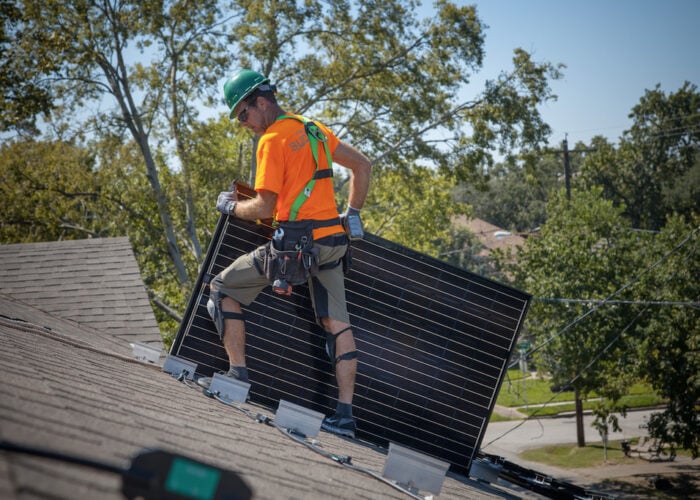Predictions that Germany will lose its place as Europe’s largest PV market this year appear to be playing out, with the country registering just over 1GW of new capacity in the first half of 2014.
This is compared to the UK, which has been widely touted as the main contender for the European solar crown this year and managed 1.4GW of new capacity in the first six months of the year, according to analysis by NPD Solarbuzz.
Unlock unlimited access for 12 whole months of distinctive global analysis
Photovoltaics International is now included.
- Regular insight and analysis of the industry’s biggest developments
- In-depth interviews with the industry’s leading figures
- Unlimited digital access to the PV Tech Power journal catalogue
- Unlimited digital access to the Photovoltaics International journal catalogue
- Access to more than 1,000 technical papers
- Discounts on Solar Media’s portfolio of events, in-person and virtual
The German government has imposed a cap of 2.5GW of new PV for 2014, but figures published by the German Federal Network Agency this week bear out recent comments from national trade body BSW-Solar that this target will not be reached.
The figures reveal that a total of 188.5MW was installed in June 2014, down from 204MW in May, but about the median compared to what has been achieved in other months so far in 2014.
By comparison, in the first six months of 2012 and 2013 Germany installed 4.4GW and 1.8GW respectively.
Although Germany now has a cumulative PV capacity of over 36GW, its stalling progress is a consequence of moves by the government to slow the market down by reducing feed-in tariffs, imposing a cap and revising the country’s EEG renewable energy laws.
These come into effect today and will bring in a number of changes.
Most controversially, they will include a range of new charges on PV users self-consuming power they generate. Although systems smaller than 10kW will remain exempt from the surcharge, any systems above this size commissioned from today will be required to pay a proportion of the EEG surcharge that will rise to 40% by 2017.
Another significant change is that a direct marketing requirement planned for commercial PV systems will be brought forward. This means that power from systems larger than 100kW will have to be sold directly through power purchase agreements from 2016 rather than 2017, as previously expected.
The UK has been predicted to reach a minimum of 2.9GW this year, about double what it achieved last year.
However, the UK’s solar boom could be short-lived depending on how the market responds to the government’s decision to introduce changes to the support mechanism for large-scale solar earlier than expected to curb runaway demand.
In May it announced it would scrap the renewable obligation scheme for projects over 5MW by next year instead of 2017. Instead it will make the new ‘contracts for difference’ mechanism the main form of support for large-scale solar, though there are concerns this will not be adequately resourced to provide a satisfactory replacement for the RO scheme.







